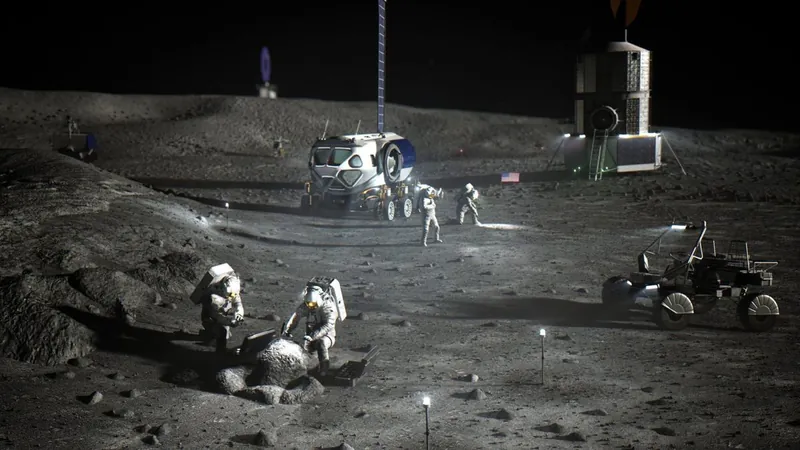
India Sets Bold Moon Goals: A Lunar Space Station by 2040!
2024-11-18
Author: Nur
India's Ambitious Lunar Plan
In an exciting leap into the cosmos, India has unveiled plans to establish a moon-orbiting space station by the year 2040. This ambitious initiative is part of a comprehensive strategy aimed at securing a sustainable human presence beyond Earth's atmosphere.
Objectives of the Lunar Outpost
The proposed lunar outpost is set to support crewed missions to the moon's surface while serving as a vital hub for groundbreaking scientific research. If timelines are met, the construction of the lunar space station will align with the country's astronauts making their historic landing on the moon, paving the way for a permanent lunar base anticipated before 2050.
Phased Approach to Moon Exploration
This lunar project marks the third and final phase of India's bold moon exploration efforts. The initial phase has focused on deploying robotic missions utilizing indigenous technology, including the highly anticipated Chandrayaan-4 sample-return mission, which is slated for launch in 2028. The objective of this mission is to gather approximately 3 kilograms (or 6.6 pounds) of samples from a water-ice rich area located near the moon’s south pole and return them to Earth. 'We are exploring how we can conduct a mission to the moon and back in a cost-effective manner,' stated S. Somanath, the Chairman of the Indian Space Research Organisation (ISRO).
Second Phase: Crewed Moon Landing
Following these adventures, the second phase aims to achieve a crewed moon landing by 2040, which will serve as the prelude to the lunar space station's construction, as reported by India Today. The station will not only host astronauts but also function as a cornerstone for future interplanetary missions.
Recent Achievements and Future Goals
India's recent success with the Chandrayaan-3 mission in August 2023, which marked the country as the fourth to successfully land a craft on the moon, has ignited a wave of ambition. PM Narendra Modi has urged the nation to pursue 'new and ambitious goals' that include a crewed flyby of the moon by 2035, followed by human landings five years later.
Comparisons with Earth-Orbiting Station
Interestingly, the vision for the lunar space station mirrors India's plans for its own Earth-orbiting station, known as the Bharatiya Antariksh Station (BAS). The development phase for BAS-1, the station's first module, was approved by the Indian government in September. Officials anticipate launching this module into low Earth orbit by 2028, aiming for the entire station to be operational by 2035.
Challenges Ahead
'This is a colossal endeavor,' remarked S. Sivakumar, project director of India's NGLV rocket, currently in development at the Vikram Sarabhai Space Centre. 'Every task presents unique challenges we have never faced before.'
Conclusion
As India races toward these milestones, the world watches eagerly. Will they achieve their lunar dreams, or will other nations outpace them? Only time will tell!


 Brasil (PT)
Brasil (PT)
 Canada (EN)
Canada (EN)
 Chile (ES)
Chile (ES)
 España (ES)
España (ES)
 France (FR)
France (FR)
 Hong Kong (EN)
Hong Kong (EN)
 Italia (IT)
Italia (IT)
 日本 (JA)
日本 (JA)
 Magyarország (HU)
Magyarország (HU)
 Norge (NO)
Norge (NO)
 Polska (PL)
Polska (PL)
 Schweiz (DE)
Schweiz (DE)
 Singapore (EN)
Singapore (EN)
 Sverige (SV)
Sverige (SV)
 Suomi (FI)
Suomi (FI)
 Türkiye (TR)
Türkiye (TR)